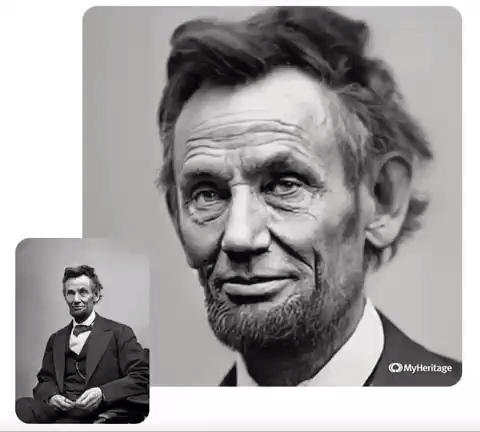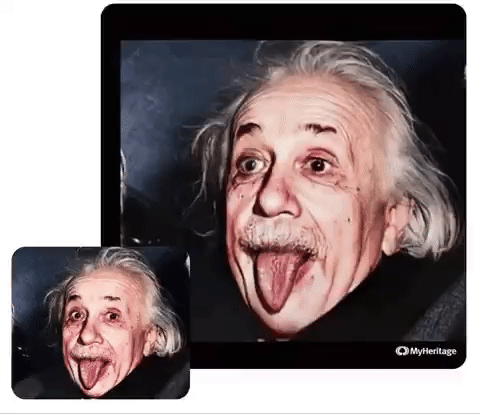Beauty is in the brain / Humans + Tech - #70
+ Reanimate your dead relatives + Inside ‘TALON,’ the nationwide network of AI-enabled surveillance cameras + Other interesting articles
Hi,
Imagine a world where marketers or data brokers get the data of your brain activity and can understand your real likes and dislikes. What do you imagine they will do with it? That’s one of the thoughts I had after reading the “Beauty is in the brain” article below.
Beauty is in the brain: AI reads brain data, generates personally attractive images
Beauty truly does lie in the eyes of the beholder. Researchers at the University of Helsinki and the University of Copenhagen have created an AI that understands our subjective notions of what makes faces attractive. It was then able to create new portraits on its own that were tailored to be found personally attractive to individuals [ScienceDaily]. It was able to do so with an accuracy of 80%.
Initially, the researchers gave a generative adversarial neural network (GAN) the task of creating hundreds of artificial portraits. The images were shown, one at a time, to 30 volunteers who were asked to pay attention to faces they found attractive while their brain responses were recorded via electroencephalography (EEG).
"It worked a bit like the dating app Tinder: the participants 'swiped right' when coming across an attractive face. Here, however, they did not have to do anything but look at the images. We measured their immediate brain response to the images," Spapé explains.
The researchers analysed the EEG data with machine learning techniques, connecting individual EEG data through a brain-computer interface to a generative neural network.
The researchers say that this type of technology can benefit society by helping us understand the source of our biases, perceptions, and decision-making.
"If this is possible in something that is as personal and subjective as attractiveness, we may also be able to look into other cognitive functions such as perception and decision-making. Potentially, we might gear the device towards identifying stereotypes or implicit bias and better understand individual differences," says Spapé.
I’m just fearful of what happens when marketers get access to this information. I can imagine a future in which virtual reality companies may gather data of our brain activity as we interact with virtual worlds through their headsets and sell these to marketers and data brokers, just as current social media and app developers gather data on our activity, likes, and dislikes and sell that data to marketers.
Reanimate your dead relatives
Genealogy website MyHeritage has created an AI tool called Deep Nostalgia that can take a photograph and animate the people in the photograph [Tony Tran, Futurism].
Deep Nostalgia uses gestures and movements recorded by models to animate the people in photographs. The results are quite impressive.


This is a lot of fun. In some cases, it can be beneficial. Animating grandparents and great grandparents, for whom no videos exist, will be useful to show grandkids and great-grandkids. And it may even help people who have lost loved ones with their grief. But I still can’t help but find it a little creepy 😄.
Inside ‘TALON,’ the nationwide network of AI-enabled surveillance cameras
A little known company called Flock has been selling smart surveillance cameras to neighbourhoods. Each camera costs around $2,500 per year. For a neighbourhood sharing this cost between all residents makes it very affordable. Flock’s software can detect and read number plates of all cars and trucks and allows residents to track all the non-resident vehicles going through their neighbourhoods [Joseph Cox, Vice].
Having sold these to neighbourhoods around the USA, Flock is now providing access to their system under a program called TALON to law enforcement agencies, giving them a nationwide network of cameras that can track the movement of vehicles and, therefore people, often outside their jurisdictions. This is bringing up many privacy concerns.
"ALPR is a mass surveillance technology. It does not discriminate between people who are involved in crimes and people who are innocent. It just collects data on everyone, with the assumption that maybe one day you might commit a crime," Dave Maass, director of investigations at activist group the Electronic Frontier Foundation (EFF), told Motherboard in a phone call.
[…]
"It is no comfort when these devices are being deployed in supposedly piecemeal fashion by scattered private users," he added. "By providing police with an internet platform to easily stitch together information from dozens or hundreds of license plate readers—without getting a search warrant from a judge—companies like Flock threaten to enable pervasive tracking of our activities and movements."
Helping to solve crimes and catch offenders is obviously positive. But at what cost are we achieving this? People are being tracked without their consent or their knowledge. Peaceful protesters are being targetted using these surveillance systems. And with more and more internet-connected devices such as Amazon’s Ring cameras that police have access to [Jason Kelley and Matthew Guarigilia, EFF], the amount of surveillance humans are undergoing cannot be a net positive for society in general, in my opinion.
Other interesting articles from around the web
🤖 Chatbots that resurrect the dead: legal experts weigh in on ‘disturbing’ technology [The Conversation on The Next Web]
Microsoft patented a chatbot in 2017 that would digitally resurrect the dead. They didn’t put it into production, saying that it was “disturbing.” The chatbots or digital reincarnations are created using data from the deceased. Keep in mind that AI chatbots have already passed the “Turing Test” — a test created to see if robots can fool humans into thinking they are talking to a human. The law, unfortunately, is far behind here:
But there are currently no laws governing digital reincarnation. Your right to data privacy after your death is far from set in stone, and there is currently no way for you to opt-out of being digitally resurrected. This legal ambiguity leaves room for private companies to make chatbots out of your data after you’re dead.
📝 New technique reveals centuries of secrets in locked letters [William J. Broad, The New York Times]
Scientists and scholars at MIT have developed a way to read ancient letters without opening them, to prevent damage. This is utterly mind-boggling technology at play.
The first step of their digital opening is to scan a target letter with an advanced X-ray machine. The resulting three-dimensional image — much like a medical scan — reveals the letter’s internal configuration. A computer then analyzes the image to undo the folds and, almost magically, turn the layers into a flat sheet, revealing handwritten text that can be read.
🚀 Applications are open for a free trip around the moon on a SpaceX rocket [Vanessa Bates Ramirez, SingularityHub]
In 2018, Yusaku Maezawa, a Japanese billionaire, signed up as SpaceX’s first commercial passenger. He’s now giving away eight spots on the spaceflight with him scheduled to take place in 2023. Interested? Click on the article link above, which has a link to the application.


Quote of the week
“A brain-computer interface such as this is able to interpret users' opinions on the attractiveness of a range of images. By interpreting their views, the AI model interpreting brain responses and the generative neural network modelling the face images can together produce an entirely new face image by combining what a particular person finds attractive.”
—Tuukka Ruotsalo, Academy Research Fellow and Associate Professor, from the article “Beauty is in the brain: AI reads brain data, generates personally attractive images” [ScienceDaily]
I wish you a brilliant day ahead :)
Neeraj






